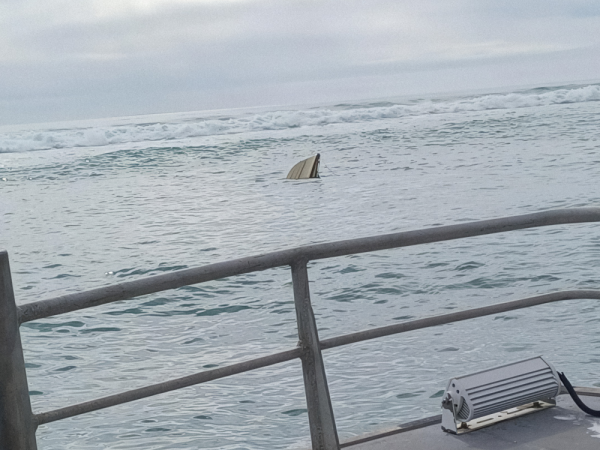Boatie convicted and fined for rollover on Raglan bar
| Published: | 28/08/2025 |
The skipper of a recreational boat that capsized and rolled trying to cross the Raglan bar last December has been convicted and fined $3000 in the Hamilton District Court by Judge Philip Crayton.
The case was brought by Waikato Regional Council under the Maritime Transport Act 1994.
Jaswant Chand, who also owned the boat, had attempted to cross a sandspit at the southern end of the Raglan bar to go fishing, with his wife and son on board, despite hazardous sea conditions at the time.
Mr Chand appeared in court on 26 August 2025, charged with operating a vessel in a dangerous manner following the capsize in which he and his wife were trapped underneath the boat. Mr Chand managed to push his wife out from underneath the boat but became trapped himself and required rescuing by surf lifesaving staff. Raglan Coastguard later recovered the vessel and towed it into Raglan Harbour.
“The defendant and his passengers faced a real risk of serious injury or drowning as a result of this incident,” said Acting Waikato Regional Harbourmaster Hayden Coburn. “Operating a vessel in a dangerous manner carries a maximum penalty of 12 months’ imprisonment and a maximum fine of $10,000 for an individual,” he said.
“This incident shows just how real the risks of bar crossings are and the case serves as a warning for all boaties to be well prepared, properly equipped and ready to change their plans if conditions are unsafe. There will always be a better day to get out on the water.”
The combination of weather, tides and currents can cause waves to break unpredictably across bars, creating an unstable and hazardous environment. Sand bars are common throughout New Zealand at the entrances of harbours and rivers. For many boaties, crossing a bar is unavoidable to reach open water — but it can be extremely dangerous, even for experienced skippers.
Waikato Regional Council urges anyone planning a bar crossing to:
- check the marine weather forecast within 12 hours of your trip
- check tides and avoid crossing at low tide
- seek local knowledge about conditions, and use live bar camera feeds where available
- secure all loose gear and ensure everyone is wearing a properly fitted lifejacket
- carry at least two forms of waterproof communication equipment
- spend time observing the bar before attempting to cross
- contact Coastguard on VHF to advise them of your crossing plans and report in once safely across.
“If you’re new to an area, it’s always safest to take an experienced skipper with you to help assess the risks and guide your decisions,” Mr Coburn said. “And most importantly, if you’re in doubt – don’t go out.”
Photo taken from Coastguard vessel of capsized vessel on Raglan bar.

